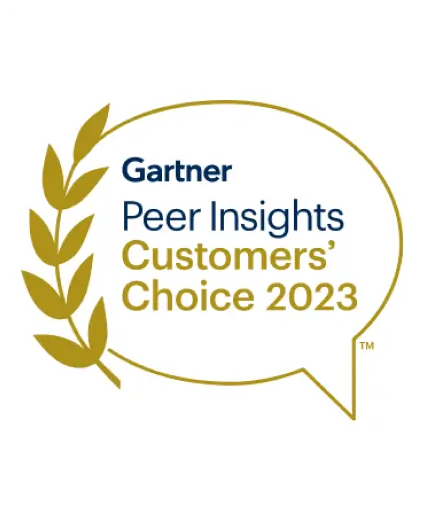Executive summary
Discover the power of Net Promoter Score (NPS) in this essential guide tailored for businesses seeking to deepen their understanding of customer loyalty. Dive into the specifics of what NPS is, its calculation, and the strategic advantage it offers in assessing customer satisfaction. This guide explains the NPS formula and walks you through its practical application, from calculation to actionable insights. Packed with comparisons to other metrics and real-world implications, it is an invaluable tool for businesses aiming to elevate their customer experience and foster lasting relationships.
In a world where customer opinion can make or break a business, the Net Promoter Score (NPS) is a crucial metric that guides companies toward stronger customer loyalty and enhanced satisfaction. It’s a compass pointing towards the true north of customer sentiment. Imagine possessing a tool that, with a single question, uncovers the depth of your customers’ loyalty, offering a snapshot of their willingness to champion your brand. NPS is this tool, cutting through the noise to provide clear, actionable insights.
NPS transcends traditional metrics, offering a nuanced glimpse into customer advocacy rather than mere satisfaction. It segments customers into promoters, passives, and detractors, vividly portraying a company’s relational dynamics with its clientele. This article strips back the layers of NPS, presenting it in a clear, accessible format. From its foundational concepts to its tactical application, we’ll explore how NPS can be seamlessly integrated into your business strategy, transforming it into a barometer of customer loyalty and a catalyst for growth. Let’s journey through the landscape of Net Promoter Score, uncovering its potential to reshape your approach to customer relationships.
What is the Net Promoter Score (NPS)?
Net Promoter Score (NPS) is not just a metric; it’s a mirror reflecting a business’s relationship with its customers. At its core, NPS measures customer loyalty and satisfaction through one pivotal question: “On a scale of 0-10, how likely are you to recommend our company/product/service to a friend or colleague?” This simple yet profound inquiry unlocks a treasure trove of insights, categorizing customers into three distinct groups based on their likelihood to promote the brand.
Promoters (Scores 9-10): These are your brand’s champions. Loyal and enthusiastic promoters are customers who’ve had such positive experiences that they’re likely to recommend your business, fueling organic growth and brand advocacy. They’re the ones who are most likely to remain loyal, making repeat purchases and spreading positive word-of-mouth.
Passives (Scores 7-8): Satisfied yet unenthusiastic, passive customers are a wild card. While content with your services, their loyalty isn’t set in stone. They won’t spread negative feedback, but their allegiance could easily sway towards competitors offering something better or different.
Detractors (Scores 0-6): The alarm bells for any business are detractors, unsatisfied customers at risk of impeding your growth through negative word-of-mouth. Their experiences, often falling below expectations, might not only deter them from future interactions with your brand but also dissuade potential customers.
Originating in 2003, the NPS system transcends traditional customer satisfaction surveys by offering a precise, concise, and comparative measure of customer loyalty. Its brilliance lies in its simplicity and actionability. Businesses can swiftly interpret NPS results, pinpointing areas for improvement and identifying the most effective strategies to convert detractors and passives into promoters. This interpreted value is crucial; a high NPS often leads to increased customer retention and revenue.
Moreover, NPS serves as a universal benchmark, allowing businesses to measure their performance against industry standards and competitors. This benchmarking positions the NPS as a vital tool and sets the stage for understanding why NPS is important.
Real-time support at scale with generative AI

Why is NPS important?
Understanding and measuring customer loyalty in today’s fiercely competitive business landscape is not just beneficial; it’s essential. That is where the Net Promoter Score (NPS) shines as a vital tool. NPS goes beyond merely tracking customer satisfaction; it delves into customer loyalty, a key predictor of business growth and longevity. Let’s explore why NPS is indispensable for businesses striving for success.
1. Predictor of growth and brand advocacy
NPS directly reflects customer loyalty and satisfaction, serves as an early indicator of market trends, facilitates competitive benchmarking, drives customer-focused improvements, and guides efficient resource allocation. These aspects make it an invaluable tool for you aiming to grow and strengthen your brand.
2. Strategic value beyond a single metric
While the NPS score offers a quick snapshot of customer sentiment, its value lies in the comprehensive feedback system it supports. NPS surveys often include follow-up questions asking customers why they provided a specific score. This feedback is a goldmine of insights, enabling businesses to understand what they are doing right and identify improvement areas. Such direct customer feedback helps fine-tune products, services, and overall customer experience.
3. Internal benchmarking and consistent tracking
NPS allows businesses to establish internal benchmarks and track improvements over time. It offers a consistent metric that can be monitored across different periods, providing a clear view of how changes in products, services, or customer support impact customer loyalty. This constant tracking is crucial for long-term strategic planning and making informed decisions that align with customer needs.
4. The unifying objective for employees
NPS can serve as a rallying point for employees, unifying them around a mission-critical objective: enhancing customer satisfaction and loyalty. When every team member, from executives to frontline staff, understands the importance of NPS, it fosters a customer-centric culture. This alignment ensures that every business decision and action is geared towards creating more enthusiastic customers, a crucial driver of sustainable business growth.
5. Comparative analysis and industry positioning
NPS also enables businesses to compare customer loyalty levels against industry averages and competitors. This benchmarking is crucial for understanding a company’s position in the market and identifying competitive advantages or areas where the competition is outperforming.
Benefits of NPS: Why use it over other customer satisfaction metrics?
Net Promoter Score (NPS) has become an indispensable tool in the business world, offering insights beyond traditional customer satisfaction metrics. Its simplicity, effectiveness, and predictive power make it an ideal choice for businesses focused on growth and customer loyalty. Let’s understand why NPS is a comprehensive system that offers unique advantages over other customer satisfaction measures.
1. Simplicity and clarity
One of the most compelling benefits of NPS is its simplicity. The single-question format cuts through the complexity often associated with survey methodologies. This straightforward approach leads to higher response rates and more precise insights. Unlike other metrics that might require lengthy surveys, NPS’s one-question format is quick and easy for customers to respond to, providing businesses with immediate and actionable feedback.
2. Predictive power for growth
NPS is more than just a snapshot of customer satisfaction; it strongly predicts future growth. High NPS scores are linked to customer loyalty, repeat business, and positive word-of-mouth referrals. In contrast to other metrics that might focus on specific aspects of customer service or product quality, NPS encapsulates the overall customer relationship with the brand, making it a more comprehensive indicator of long-term business success.
3. Segmentation of customer types
NPS uniquely segments customers into promoters, passives, and detractors, each requiring different engagement strategies. This segmentation allows businesses to tailor their approach to each group, maximizing customer retention and conversion. Other metrics may provide an overall satisfaction score but lack the nuanced segmentation that NPS offers, which is crucial for targeted customer relationship management.
4. Benchmarks and comparative analysis
NPS provides an industry-standard metric that allows for meaningful comparisons with competitors and benchmarks within the industry. This comparative analysis is vital for businesses to understand their market standing and identify improvement areas. While other metrics might provide internal insights, NPS enables businesses to position themselves in a broader market context.
5. Actionable insights and continuous improvement
The follow-up question in NPS surveys – asking customers the reason for their score – yields qualitative insights that are invaluable for continuous improvement. This aspect of NPS surveys helps businesses to understand the ‘why’ behind the scores, offering a depth of understanding that other metrics might not provide.
6. Customer loyalty and brand advocacy
NPS goes beyond measuring satisfaction; it’s about measuring loyalty and advocacy. A high NPS indicates customers who are not only satisfied but are also enthusiastic advocates of your brand. This level of advocacy is a crucial driver of organic growth and is often not captured in other customer satisfaction metrics.
7. Cost-effectiveness and accessibility
Implementing NPS is relatively inexpensive and accessible for businesses of all sizes. Its cost-effectiveness and rich insights make it a valuable tool for businesses operating on various budgets. Other customer satisfaction tools may require more resources and time to implement and analyze, making NPS a more practical choice for many companies.
8. Unified focus across the organization
NPS provides a clear and unified focus for the entire organization. From front-line employees to top management, everyone understands the importance of turning detractors into passives, passives into promoters, and maintaining promoter loyalty. This clarity is often missing in other metrics, which might be more difficult for all employees to relate to or act upon.
Implementing a Net Promoter Score (NPS) survey: A strategic guide for businesses
Implementing a Net Promoter Score (NPS) survey effectively is vital for businesses that enhance customer loyalty and satisfaction. An NPS survey, when executed well, offers deep insights into customer perceptions and informs strategic decisions. Let’s refine our approach to implementing an NPS survey, incorporating best practices and innovative tools like AI-driven chatbots.
1. Designing the survey
Central question: The heart of the NPS survey is the question, “On a scale of 0 to 10, how likely are you to recommend our company/product/service to a friend or colleague?” This question needs to be clear and direct, encouraging genuine customer feedback.
Follow-up question: A follow-up question such as “What’s the most important reason for your score?” is crucial. It provides qualitative data that helps understand the customer’s reasoning, offering richer insights than numerical scores alone.
2. Choosing the right medium
Email surveys: Direct email remains an effective medium, particularly when personalized. A genuine tone can encourage honest feedback and higher response rates.
Chatbots: Utilize AI-driven chatbots as a dynamic tool for conducting NPS surveys. Chatbots can engage customers immediately post-interaction, making feedback collection timely and contextually relevant.
Automated survey tools: Platforms specifically designed for NPS can streamline the process, ensuring efficient data collection and analysis. Integration with CRM systems can also enhance this process.
3. Survey frequency and timing
Distributed surveys: Rather than surveying all customers at once, distribute the surveys over time. This approach provides ongoing feedback, reflecting customer sentiment more accurately.
Transactional timing: For businesses focused on transactions, consider when to send the survey. Immediately post-purchase surveys can measure the buying experience while delaying the survey can assess long-term product satisfaction.
4. Analyzing brand vs. product loyalty
Focus area: Decide whether the survey aims to understand loyalty to individual products or the brand as a whole. Typically, focusing on overall brand loyalty yields more beneficial insights for strategic decision-making.
5. Engaging customers post-survey
Follow-up engagement: Always engage with customers after they have provided their feedback. It can range from thanking high scorers and inviting them to share their positive experiences more widely to addressing detractors’ concerns and working to convert their perceptions.
Tips for successful NPS survey implementation
- Personalization: Tailoring the survey and follow-up communications can make customers feel more valued and understood.
- Transparency: Clearly communicate the purpose of the survey and how the feedback will be used to improve customer experience.
- Action-oriented approach: Ensure that the insights gathered from the survey lead to tangible actions and improvements.
- Integration with CRM: Linking your NPS tool with your CRM system can provide a more comprehensive view of customer feedback and behavior.
How to calculate net promoter score? With formula details.
The Net Promoter Score (NPS) is a pivotal metric for gauging customer loyalty and forecasting business growth. Once the NPS survey is completed and all responses are collected, the next crucial step is to calculate the Net Promoter Score, turning the gathered data into meaningful insights for the business. Calculating NPS involves a straightforward but powerful formula. Let us go through the details of the NPS calculation process, complete with formula details and practical examples, making it an accessible and actionable tool for businesses.
Categorizing responses
Responses are divided into three categories collected via the NPS survey:
- Promoters (Scores 9-10): Satisfied and loyal customers who are likely to recommend your business and contribute to positive word-of-mouth.
- Passives (Scores 7-8): Satisfied but indifferent customers who are less likely to promote your brand actively.
- Detractors (Scores 0-6): Dissatisfied customers who could potentially harm your brand’s reputation through negative feedback.
The NPS calculation formula
To calculate the Net Promoter Score, use the following formula:
{NPS} = ({% of Promoters}) – ({% of Detractors})
It means you subtract the percentage of Detractor responses from the percentage of Promoter responses. The score ranges from -100 (if every customer is a Detractor) to +100 (if every customer is a Promoter).
Example of NPS calculation
Imagine you surveyed 100 customers about their likelihood of recommending your business. The responses might break down as follows:
- 60 customers gave scores of 9-10 (Promoters)
- 20 customers gave scores of 7-8 (Passives)
- 20 customers gave scores of 0-6 (Detractors)
To calculate your NPS:
- Calculate the percentage of Promoters: (60/100) * 100 = 60%
- Calculate the percentage of Detractors: (20/100) * 100 = 20%
- Apply the NPS formula: NPS = 60% – 20% = 40
Thus, your NPS score would be 40, indicating a positive balance of customer loyalty, with more Promoters than Detractors.
Understanding your NPS score
- Positive Score (above 0): Indicates more Promoters than Detractors, a sign of customer loyalty and potential for growth.
- A score of 50 or above: Considered excellent, showing strong customer loyalty and brand advocacy.
- Negative score (below 0): Reflects more Detractors than Promoters, signaling issues in customer satisfaction and potential challenges in retaining customers.
The role of passives
It’s important to note that while Passives are not included in the NPS calculation, they represent an opportunity for improvement. Turning passives into promoters can significantly boost your NPS and overall customer satisfaction.
What is a good Net Promoter Score?
Merely calculating the NPS is not enough, but to understanding what constitutes a ‘good’ Net Promoter Score (NPS) is essential for businesses aiming to gauge their performance accurately. A ‘good’ NPS reflects customer satisfaction and loyalty and indicates the potential for business growth and success. Let’s understand what makes an NPS score good, excellent, or world-class.
Defining a ‘Good’ Net Promoter Score
Understanding the NPS Scale: The NPS scale ranges from -100 to +100. This range is derived by subtracting the percentage of detractors (customers less likely to recommend) from the percentage of promoters (customers more likely to recommend).
A score of -100 implies that every respondent is a detractor, while a score of +100 signifies that every respondent is a promoter.
Interpreting the NPS scores
- Above zero: Generally, a score above 0 is considered ‘good,’ indicating that you have more promoters than detractors.
- Above +50: An NPS score above +50 is often considered ‘excellent.’ This score suggests strong customer loyalty and a robust base of satisfied customers who are likely to recommend your products or services.
- Above +70: A score exceeding +70 is deemed ‘world-class.’ This level reflects exceptional customer loyalty and satisfaction, indicating that your company excels in meeting and surpassing customer expectations.
Industry-specific benchmarks
NPS benchmarks can vary significantly across different industries. A good score in one industry might be just average or even below par in another. Hence, businesses must compare their NPS with industry-specific benchmarks to better understand their performance.
Example of NPS interpretation
Imagine a company in the retail sector with an NPS of 55. To evaluate this score:
Compare it against the average NPS scores within the retail industry. If the industry average is around 40, a score of 55 would be considered excellent, suggesting the company is performing well above the industry norm in terms of customer loyalty and satisfaction.
How to use chatbots to drive Net Promoter Scores (NPS)?
Leveraging chatbots has become a game-changer for businesses aiming to enhance their Net Promoter Scores (NPS). Powered by generative AI, Chatbots are tools for customer interaction and are pivotal in gathering valuable customer feedback, including NPS. Let’s understand how businesses can effectively use chatbots to drive their NPS and why it makes a significant difference.
Harnessing chatbots for NPS: The strategic advantage
Prompt and efficient feedback collection: Chatbots enable immediate feedback requests post-interaction, ensuring that the customer’s experience is fresh in their memory. This timeliness often leads to more accurate and honest responses, contributing to a reliable NPS.
Cost-effective and continuous data collection: Deploying chatbots for NPS surveys significantly reduces operational costs. They operate 24/7, gathering data continuously and providing a broader and more consistent feedback loop than traditional methods.
Customized interaction for targeted feedback: Chatbots can be programmed to ask tailored NPS-related questions based on the specific interaction or transaction. This customization ensures that the feedback received is directly relevant to the customer’s recent experience with the brand.
Enhancing engagement through personalization: Chatbots can make the NPS survey feel more engaging and less intrusive by personalizing conversations based on previous interactions, leading to higher response rates and more meaningful feedback.
Convenient and accessible feedback channels: Implementing chatbots on various digital platforms makes it easier for customers to provide feedback through their preferred channels without filling out long survey forms. This convenience often results in a higher volume of responses, enriching the data pool for NPS calculation.
Practical ways to deploy chatbots for NPS
- Post-interaction surveys: Integrate chatbots to automatically prompt an NPS survey after key customer interactions, like post-purchase or after customer support resolutions.
- Omnichannel survey distribution: Utilize chatbots across multiple digital platforms – social media, company website, and emails, to ensure a seamless and integrated experience for customers providing feedback.
- Longitudinal interaction tracking: Chatbots can analyze ongoing customer interactions over time to identify patterns by leveraging the power of artificial intelligence and machine learning. These insights can be used in the context and times of NPS surveys for more nuanced feedback.
- Real-time engagement for immediate feedback: Engage customers in real-time conversations to solicit spontaneous feedback. This approach can provide insights into the immediate customer sentiment and contribute to a more dynamic NPS.
As businesses understand the utility of chatbots in driving NPS, the transition to the next crucial question becomes evident: How can a business effectively implement these chatbots to maximize their NPS potential? That is where solutions like Yellow.ai come into play, offering advanced AI-powered chatbots that are tailored to meet these specific business needs. Yellow.ai’s chatbots are designed not only to interact but to intelligently analyze and respond to customer sentiment, paving the way for a more sophisticated approach to understanding and enhancing customer loyalty, as reflected in the NPS.
How Yellow.ai can help you to build an AI chatbot?
AI chatbots have emerged as crucial tools for enhancing customer experiences and driving key metrics like Net Promoter Score (NPS). That is where Yellow.ai excels, offering a sophisticated platform that empowers businesses to build powerful AI-driven chatbots. Yellow.ai’s platform is not just about creating chatbots; it’s about crafting intelligent digital assistants that understand, interact, and deliver results in a way that reshapes customer interaction dynamics.
Key features of Yellow.ai’s platform
Advanced Natural Language Processing (NLP): Yellow.ai’s chatbots are equipped with cutting-edge NLP capabilities, allowing them to understand customer queries in a nuanced manner and ensuring more meaningful and effective interactions.
Seamless CRM integration: The platform can be integrated effortlessly with existing CRM systems. It means that all the data collected through chatbots can be used to enrich customer profiles and personalize future interactions.
Customizable chatbot interfaces: Recognizing that every business has unique needs, Yellow.ai provides customizable chatbot interfaces. This feature allows businesses to tailor the look, feel, and functionality of their chatbots according to their specific requirements.
24/7 customer engagement: Yellow.ai’s chatbots operate round the clock, offering consistent customer support and feedback collection, thus ensuring no customer query goes unanswered, regardless of the time.
Real-time analytics and insights: The platform offers real-time analytics, helping businesses track chatbot performance, customer satisfaction levels, and other key metrics, enabling them to make data-driven decisions.
Omnichannel presence: With Yellow.ai, chatbots can be deployed across various digital platforms, ensuring a unified customer experience whether interacting via the web, mobile, social media, or messaging apps.
Automated and scalable: The AI chatbots are designed to handle a vast number of queries simultaneously, scaling up as per demand ensuring efficient management of large customer volumes without compromising on quality.
Personalization and contextual awareness: Yellow.ai chatbots are built to remember past interactions and preferences, providing a personalized experience to each customer and enhancing satisfaction and loyalty.
Yellow.ai stands out as a comprehensive solution for businesses seeking to leverage AI chatbots for improved customer engagement and NPS enhancement. To discover the full potential of Yellow.ai for your business, book a demo today and witness firsthand how these AI chatbots can transform your customer engagement strategy.
Summing up the NPS guide
As we conclude this comprehensive guide on Net Promoter Score, it’s evident that NPS is more than just a metric; it’s a strategic tool that offers deep insights into customer loyalty and business growth. From understanding its importance to calculating it accurately to leveraging chatbots for enhanced data collection, NPS stands as a pivotal factor in shaping business strategies and customer relationships.
Embracing NPS within business practices helps not only assess current performance but also chart a roadmap for future improvement. It underlines the importance of customer experience and satisfaction in today’s competitive market. With the right tools and approach, particularly the use of advanced solutions like Yellow.ai, businesses can transform customer feedback into actionable insights, driving growth and fostering enduring customer relationships.
Real-time support at scale with generative AI

Frequently asked questions
How can a business improve its net promoter score?
Improving a business’s Net Promoter Score (NPS) involves enhancing overall customer satisfaction and loyalty. Businesses can achieve this by meticulously analyzing feedback, especially from detractors, and addressing the underlying issues. Investing in customer service quality, ensuring product excellence, and creating personalized experiences are key strategies. Regularly conducting NPS surveys and responding to customer feedback demonstrate a commitment to customer needs, gradually improving the NPS.
Is 70% a good Net Promoter Score?
Yes, a Net Promoter Score (NPS) of 70% is considered excellent. It indicates a high level of customer satisfaction and loyalty, with a substantial majority of customers acting as brand promoters. An NPS of 70% is well above the average for most industries and suggests that a business is succeeding in delivering exceptional service and value to its customers.
What are the key benefits of NPS?
The key benefits of using Net Promoter Score (NPS) include gaining clear insights into customer loyalty, identifying potential areas for improvement, and benchmarking performance against competitors. NPS helps forecast business growth, align employee efforts toward customer satisfaction, and effectively segment customers into promoters, passives, and detractors for targeted strategies.
What are NPS and CSAT?
NPS (Net Promoter Score) and CSAT (Customer Satisfaction Score) are both metrics used to measure customer satisfaction and loyalty. NPS assesses the likelihood of customers recommending a brand to others, thus indicating customer loyalty. In contrast, CSAT measures immediate satisfaction with a product or service, focusing on specific transactions or experiences.
How do you survey a Net Promoter Score?
To survey a Net Promoter Score (NPS), businesses ask customers a fundamental question: “On a scale of 0 to 10, how likely are you to recommend our company/product/service to a friend or colleague?” Customers’ responses are categorized into promoters, passives, and detractors. The NPS is then calculated by subtracting the percentage of detractors from the percentage of promoters.
How do you structure an NPS survey?
An NPS survey is structured around its central question on the likelihood of a recommendation. It is followed by an open-ended question asking for reasons behind the given score. It’s crucial to keep the survey concise and focused, ensuring it’s easy for customers to complete. The survey should be structured to capture actionable feedback while being engaging for the customer.
What is the purpose of the eNPS survey?
The purpose of an Employee Net Promoter Score (eNPS) survey is to measure employee loyalty and satisfaction within an organization. It’s an internal survey that asks employees about their likelihood to recommend the organization as a place to work. eNPS helps in understanding employee engagement and identifying areas for improvement in the workplace.
How is the eNPS score calculated?
The Employee Net Promoter Score (eNPS) is calculated similarly to the customer-focused NPS. Employees are asked to rate on a scale from 0 to 10 their likelihood to recommend the organization as a workplace. Responses are categorized into promoters, passives, and detractors. The eNPS is calculated by subtracting the percentage of detractors from the percentage of promoters.





























